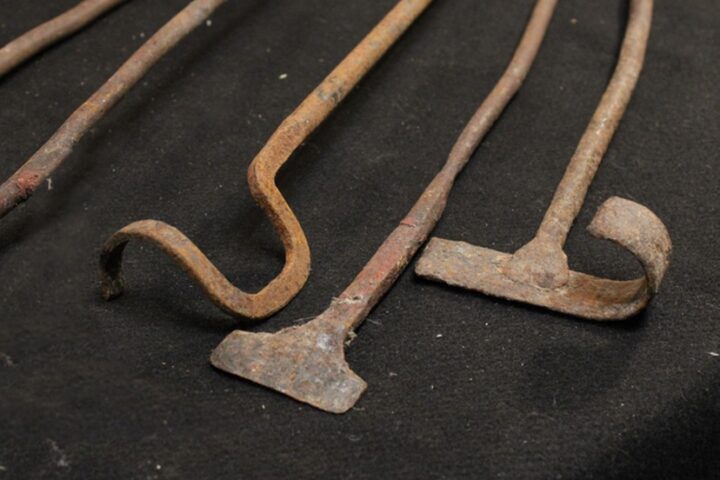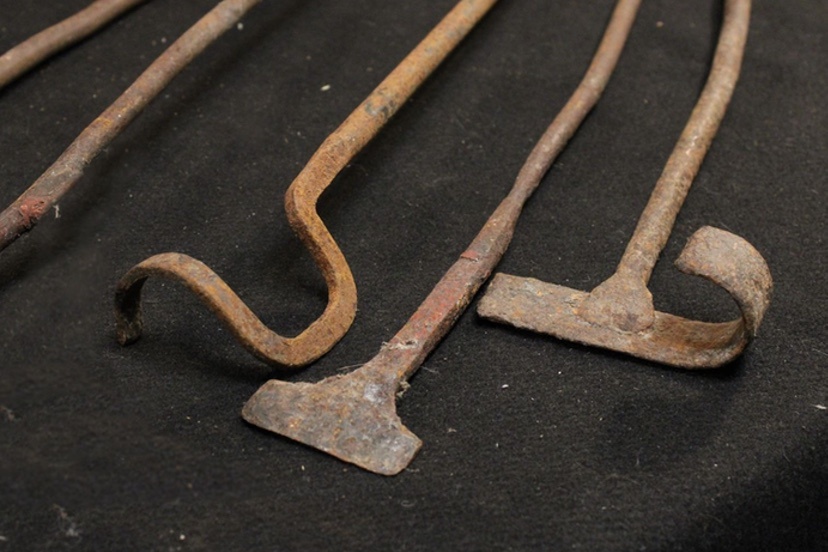As I mentioned in Part One, the San Juan Water Conservancy District (SJWCD) was formed about 35 years ago, to promote the construction of water reservoirs in Archuleta County. And back in 2003, it looked as if the District might actually see one built, within the next decade or two. A study by Durango-based water engineer Steve Harris suggested that Pagosa Area Water and Sanitation District (PAWSD) would be running seriously short of drinking water resources by 2020, and SJWCD and PAWSD subsequently collaborated to obtain water rights for a future reservoir in the Dry Gulch valley north of downtown Pagosa Springs.
The 660-acre Running Iron Ranch, purchased by the two districts in 2008, would provide most of the vacant land needed for the reservoir.
As of 2024, the proposed reservoir is no closer to being built than it was in 2003. Fortunately, Mr. Harris’ prediction that PAWSD would run out of water by 2020 proved to be grossly inaccurate.
Disclosure: I currently serve as a volunteer on the PAWSD Board of Directors, but this editorial reflects only my own personal opinions and not necessarily the opinions of the PAWSD Board as a whole.
I thought the reservoir project was dead in the water (so to speak) back in June 2017, when I attended an Archuleta Board of County Commissioners’ work session. The BOCC meeting was entertaining and informative, and the BOCC discussed several important topics, including a tentative proposal to place a tax increase proposal before the Archuleta County voters. The yet-to-be-defined tax increase would, if approved by the voters, be used to fund the debt on a new County jail and new Sheriff’s offices, and perhaps also for expanded downtown facilities for the State Judicial Department.
The price tag for all this new stuff was vague, but appeared to total maybe $20 million.
The County commissioners were concerned, because they’d heard that SJWCD was planning to ask the same voters for a tax increase, for the proposed Dry Gulch Reservoir, at the same election.
Asking the voters to approve two tax increase measures at the same election typically means neither one will pass.
Here is then-Commissioner Michael Whiting, breaking the bad news to his two fellow commissioners, Steve Wadley and Ronnie Maez:
“I attended the San Juan Water Conservancy District (SJWCD) board meeting last night, and they voted to go to the ballot in November for a tax increase, for Dry Gulch.”
That is, the Dry Gulch Reservoir.
“They also agreed to change the name [of the proposed reservoir project.]”
Reportedly, the SJWCD board couldn’t agree on exactly what new name they wanted to use. One of the suggestions was the ‘Running Iron Reservoir’ — based on the fact that the previous owners of the Dry Gulch property had called their operation, the ‘Running Iron Ranch.’
I could have supported that name change, in 2017.
Back in the cowboy days in Texas, one of the quickest ways for a cattle rustler to arrange for his own hanging ceremony was to be caught carrying “running irons” rolled up in his bedroll.
From an online article, “Running Irons,” by G.R. Williamson:
The mere possession of these rustler’s tools meant an on-the-spot trial for the rider that usually resulted in a rancher hollering, “String him up!”
No judge, no lawyers, no arguing — just pure and simple justice…
In those days, branding irons for marking the ownership of cattle came in two very distinct types.
1. Long-handled stamp irons that burned the registered brand of the ranch, and…
2. Short-handled ‘running irons’ used by cattle rustlers to alter those legitimate brands.
According to Mr. Williamson, the business end of a running iron was shaped into a hook, a curve, a straight line or sometimes a “V” shape.
This enabled rustlers to change an “R” to a “B”, an “F” to an “E”, an “I” to a “7”, or one of many combinations. One of the most frequently changed brands was “XIT”, the brand of the huge North Texas ranch owned by the British syndicate led by Charles B. and John V. Farwell.
At its peak, the XIT Ranch was home to around 150,000 head of cattle, with 1,500 miles of fencing. Their brand could be manipulated in a number of ways, by a properly equipped cattle rustler. The most common way was altering it into a star with a cross inside.

When the Weber family sold their 660-acre ranch of property to SJWCD and PAWSD, the $10 million deal was negotiated by the then-President of the San Juan Water Conservancy District, Fred W. Schmidt. (The “W” stands for “Weber.”) Mr. Schmidt vanished from Archuleta County shortly after the deal was concluded, never to be seen again.
The negotiated sale included a stipulation that the Weber family could continue to use the ranch for a period of 15 years, or until work on the reservoir commenced, whichever came sooner. For this privilege, the Webers paid a lease fee of $1 per year.
As noted, the construction of the reservoir has not yet begun… and might conceivably never begin… So for 15 years the Webers were able to run cattle on the ranch, and perhaps even more profitably, were able to mine thousands of tons of good quality rock that was crushed into gravel, and sold.
The lease expired at the end of 2022, and SJWCD and PAWSD decided to extend the grazing and mining leases for another year, with the stipulation that the Webers would sell its gravel to PAWSD, to be used for the new Snowball water treatment plant currently under construction.
The PAWSD Board (on which I serve) then approved another extension, for grazing and crushing (but not mining) in 2024. But those two leases needed to be approved by the co-owner of the Running Iron Ranch: SJWCD.
I attended a meeting of the SJWCD Board on June 17, to learn whether SJWCD would agree to the new leases.

